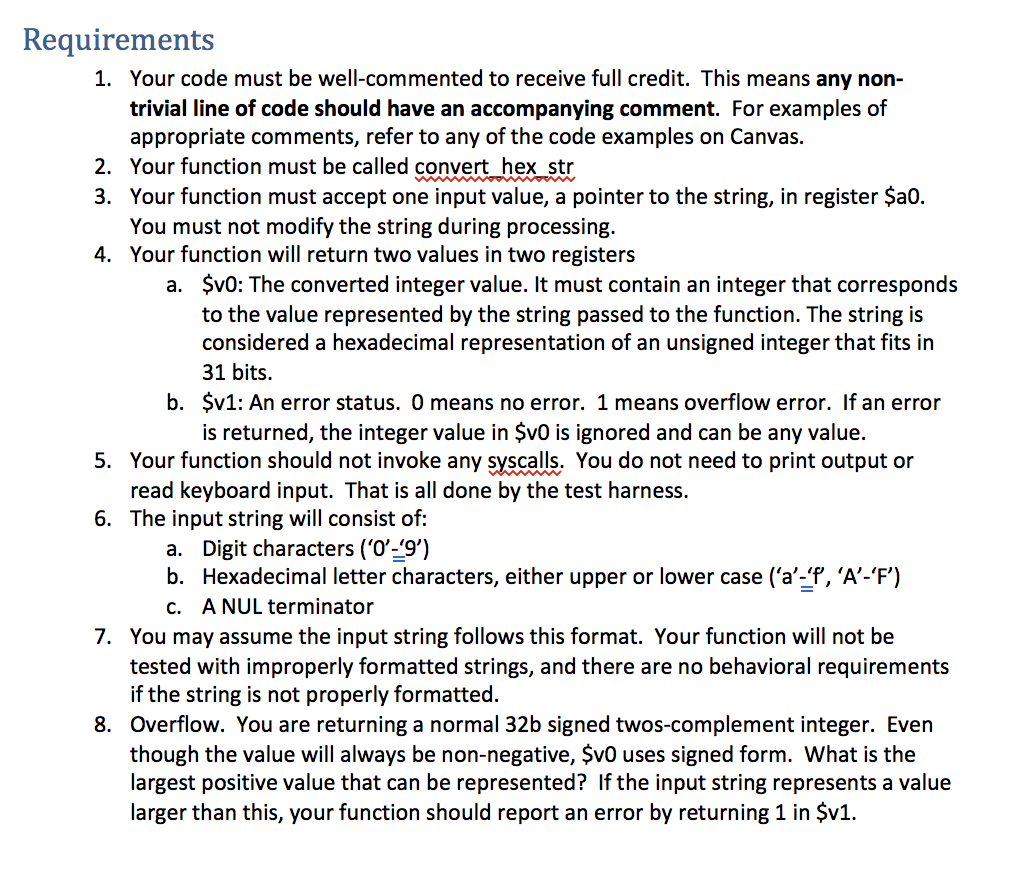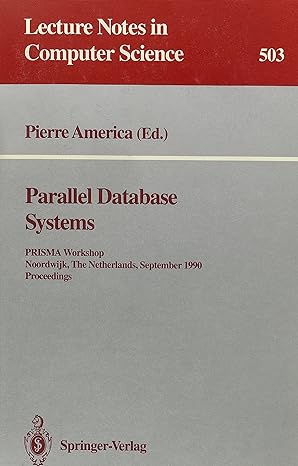Question
Write a function in MIPS assembly by using the provided test_harness.s to complete the following requirements. Modify only the Place your function here part! #
Write a function in MIPS assembly by using the provided test_harness.s to complete the following requirements. Modify only the "Place your function here" part!
# test_harness.s
#-------------------------------------------------------------------------
# PLACE YOUR FUNCTION HERE
#-------------------------------------------------------------------------
.text
#-------------------------------------------------------------------------
# DO NOT MODIFY BELOW THIS COMMENT
#-------------------------------------------------------------------------
# Test harness
# Ask user to enter the hex string.
# Print the resulting integer, or report overflow.
# An empty string will terminate the program.
.data
# User prompt strings
prompt_str: .asciiz "Enter your hexadecimal string. Just hit enter to
quit: "
your_str: .asciiz "Your string: "
linefeed: .asciiz " "
dbl_linefeed: .asciiz " "
value_str: .asciiz "Value : "
overflow_str: .asciiz "Overflow detected! "
all_done_str: .asciiz " Good luck with your program!. Goodbye. "
hex_str_buf: # Space for input string from user.
.space 256
.text
.globl main
.globl convert_hex_str
main:
get_input_string:
# display prompt
li $v0,4 # code for print_string
la $a0,prompt_str # point $a0 to prompt string
syscall # print the string
# get the input string from the user
li $v0,8 # code for read_string
la $a0,hex_str_buf # $a0 - input buffer address
li $a1,256 # $a1 - Input buffer length
syscall # Get the string
# The string is NUL terminated.
la $s0,hex_str_buf # Save string in $s0
# SPIM puts a closing NEW LINE (ASCII 0xa) on the end of the string.
# We need to strip that off, since that is not a legal character in
our hex format.
# We just overwrite it with NUL (ASCII 0)
move $s1, $s0 # $s1 char pointer
strip_nl:
lbu $s2, ($s1) # $s2 Get the current character
beqz $s2, remove_nl
addi $s1, $s1, 1 # Next character
j strip_nl
remove_nl:
li $s2, 10 # Expected NL = ASCII 10 (0xa)
lbu $s3, -1($s1) # Character just before the NUL terminator
bne $s3, $s2, check_for_exit
li $s2, 0 # NUL Char (0)
sb $s2, -1($s1) # Wipe out NL
check_for_exit:
# Check if the input string is empty.
lbu $s2, ($s0) # Load first byte of the string.
beq $s2, $0, all_done # Exit if first byte is NUL terminator
# print result string
# - Prompt string
li $v0,4 # code for print_string
la $a0, your_str
syscall # print the string
# - The string
li $v0,4 # code for print_string
move $a0, $s0
syscall # print the string
# - LF
li $v0,4 # code for print_string
la $a0,linefeed # point $a0 to string
syscall # print the string
# Call Hex Converter
move $a0, $s0
jal convert_hex_str
move $s1, $v0 # Save value result in $s0
move $s2, $v1 # Save error result in $s1
beq $v1, $0, no_overflow
# - Overflow detected
# Print overflow message
li $v0,4
la $a0, overflow_str
syscall # print the string
j get_input_string # Repeat
# - Value
no_overflow:
# Print value message.
li $v0,4 # code for print_string
la $a0, value_str
syscall # print value prompt
li $v0,1 # code for print_int
move $a0, $s1
syscall # print the value itself.
li $v0,4
la $a0,dbl_linefeed
syscall # print the linefeed
j get_input_string # Repeat
# - Prompt string
li $v0,4 # code for print_string
la $a0, error_str
syscall # print the string
# All done, thank you!
all_done:
li $v0,4 # code for print_string
la $a0, all_done_str
syscall # print the string
li $v0,10 # code for exit
syscall # exit program


Step by Step Solution
There are 3 Steps involved in it
Step: 1

Get Instant Access to Expert-Tailored Solutions
See step-by-step solutions with expert insights and AI powered tools for academic success
Step: 2

Step: 3

Ace Your Homework with AI
Get the answers you need in no time with our AI-driven, step-by-step assistance
Get Started


